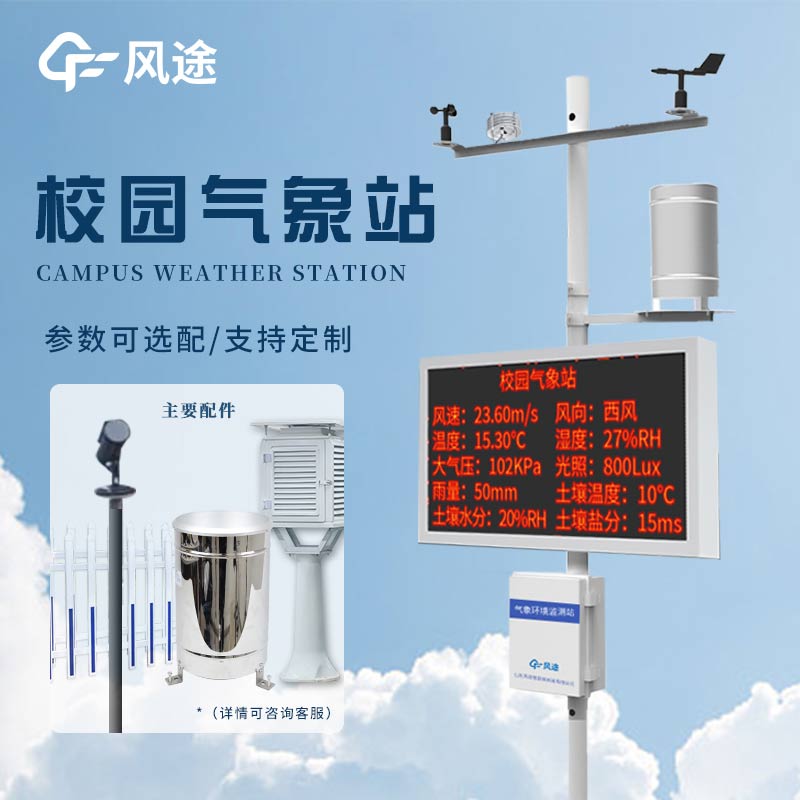Meteorological environment monitoring equipment supplier
Insist on doing high-precision customer favorite technology products
I. Design Goals
Provide primary school students with an intuitive and interesting meteorological observation platform to stimulate their interest in meteorological science and cultivate their observation ability, practical ability and scientific literacy.
II. Equipment Configuration
(1) Simple meteorological instruments
Thermometer: measures air temperature.
Hygrometer: monitors air humidity.
Wind vane: indicates wind direction.
Anemometer: determines wind speed.
Rain gauge: measures rainfall.
(2) Display equipment
Meteorological information display board: used to display real-time meteorological data and meteorological knowledge.
Model props: such as globes, cloud models, etc., to help students better understand meteorological phenomena.
III. Installation Location
Select an open and unobstructed site on campus, such as beside the playground or in the park, to ensure that meteorological instruments can accurately measure meteorological data in the natural environment.
IV. Teaching Activity Design
(1) Daily observation
Organize students to form a meteorological observation group and record meteorological data regularly every day.
Let students learn to read and record the data of thermometers, hygrometers, wind direction and speed instruments and rain gauges.
(2) Meteorological science popularization
Use the meteorological information display board to regularly update meteorological knowledge, such as the formation reasons of different weather phenomena and the impact of meteorology on life.
Hold meteorological science popularization lectures and invite professional meteorological personnel to come to the school to explain meteorological scientific knowledge.
(3) Practical activities
Organize students to draw simple meteorological charts according to meteorological data and analyze weather change trends.
Simulate weather forecasts. Let students make weather predictions according to the observed meteorological data and broadcast them in classes or schools.
V. Safety and Maintenance
Ensure that meteorological instruments are firmly installed to avoid accidents during students' activities.
Regularly inspect and maintain meteorological instruments to ensure their normal operation.
Conduct safety education for students to let them know the precautions in activities at the meteorological station.
VI. Summary
Through the construction of the Kids Weather Station, students can learn meteorological scientific knowledge in practice and improve their scientific literacy and comprehensive ability.
